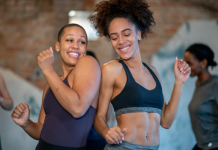–SPONSORED CONTENT–
As the owner of an athletic footwear store one of the most common questions I get is “when should I replace my shoes?” There is, of course, no simple answer to this question.
Most athletic shoes are made with an open cell foam platform called the midsole. As we run we impact our shoes with three times body weight, making this midsole susceptible to what we call compression set – or the compression of foam over time. The first point of contact is usually the lateral aspect of the shoe where the foam will compress fastest. Thinking of the shoe like a car – it’s as though over time we slowly let air out of the tires. In particular the back passenger tire ends up going completely flat! At the same time the outer sole shows signs of wear while the upper stretches out making the shoe less cushioned and less supportive. All these factors seem to reach a peak after around 800km of running or walking. Many runners or walkers describe feeling that something simply isn’t right in their knees, back, or feet. A warning sign that the shoe may need replacing.
There is some recent research that shows that a lack of cushioning is really not that significant in terms of injury management and prevention. The shoes are a platform for your body and active people respond to that platform differently. Some do better with less cushioning and a very stable thin base which gives them improved proprioception and dynamic balance. Others enjoy the protection of a solid shoe with more cushioning. In the final analysis there is no simple answer to what seems like a very simple question. The answer is a personal one and like with all athletic equipment we must simply listen to our bodies and replace things when we are ‘told’.
The 800 km benchmark for wear is useful to a runner, but how do we transpose this running ‘mileage’ to be useful to the gym setting. A traditional fitness class involves more impact specifically on the forefoot of the shoe. As well there is a lateral component to many gym workouts adding stress to the upper of the shoe. Considering these factors and based on observations over a 40 year career selling shoes…..an hour’s worth of plyometrics and explosive gym training is equivalent to about 5 to 7 miles worth of running wear and tear. Maybe think about it this way: a person using their shoe in the gym three times per week for an hour would find that the shoe shows classic signs of wear and tear and be due for possible replacement after about six months or 800 km of use. Keep in mind that each individual is of course unique .Some people are successful wearing their shoes until they have holes in the front and no tread on the bottom. Others are acutely aware of the smallest deviation in the shoe and only react positively to a pair of new stable highly cushioned sneakers!
For fitness professionals athletic footwear is a critical piece of equipment. It is important to listen to your body and replace your footwear when your body says it’s time or when your mileage indicator flashes those 800km warning signs!
Remember BCRPA Registered Fitness Leaders also get 30% off on almost all items in our stores. As well LadySport and FitFirst are happy to extend a 10% discount to all of your clients upon referral to us.
©British Columbia Recreation and Parks Association. All rights reserved.







